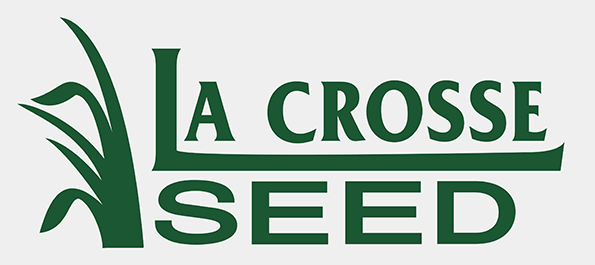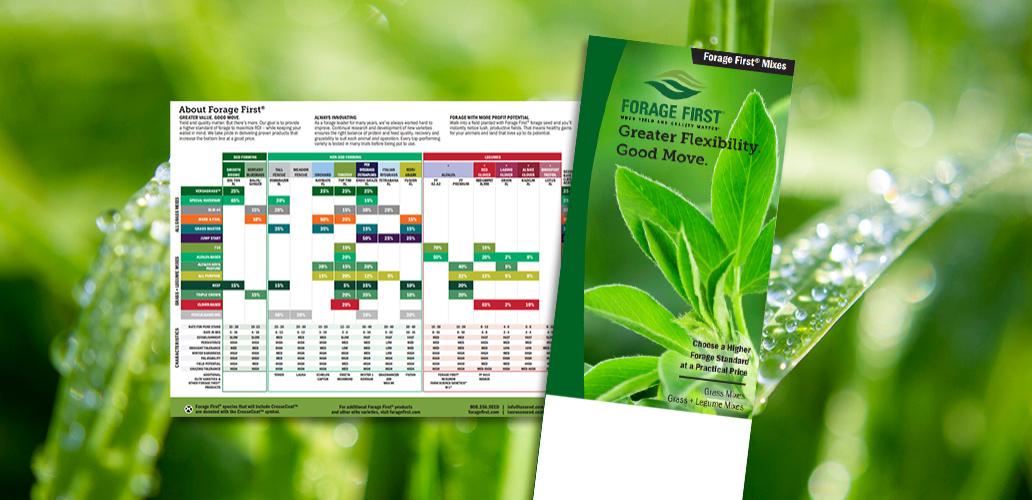Forage First Guide I Summer Select Guide
Greater Value. Good Move. Yield and quality matter. But there’s more. Our goal is to provide a higher standard for forage to maximize ROI– while keeping your wallet in mind. We take pride in delivering proven products that increase the bottom line at a good price.

Summer Select GreenSugar MS sorghum x sudangrass is a conventional (non BMR) sorghum x sudangrass, it has some unique features that set it apart from the generic sorghum x sudangrass found in the market. GreenSugar is a very late heading, male sterile sorghum x sudangrass, which not only widens the window of harvest, but also will not produce grain (unless another pollen source is available). Energy and sugar levels of this variety are very high, making it ideal for producers looking for a high energy crop at a reasonable price. GreenSugar MS is very disease resistant, making it a very popular choice across a very large geography.
CHARACTERISTICS:
1 = Poor; 5 = Excellent
BMR (Brown Mid-Rib): N/A
Traits: Male Sterile
Maturity: Medium Late
Seedling Vigor: 4
Recovery After Cutting: 3
Leaf Disease Resistance: 4
Sugarcane Aphid Tolerance: 1
Double Crop: 4
Single Silage Cut: 2
Rapid Dry Down: 2
Uses:
- Grazing – recommended begin height is 20-24 in. with a stop height of 6-7 in.
- Hay/Baleage – the high yields and energy levels (sugars) or the SS GreenSugar MS are sure to impress as a hay/baleage product
SEEDING:
Planting Time:
May-July
Emergence (days): 10
Seeding Information:
- Soil temperature of 60 F and climbing
- Average seeds/pound: 14,000-15,000
- Planting depth should be 1-1½ in., depending on soil moisture
- Follow recommended seeding rates for your area:
Higher moisture areas: 50-60 lbs./acre drilled
High plains (lower moisture): 20-25 lbs./acre drilled
- Can be no-tilled into the stubble of winter and spring crops
- Do not plant in soil with pH greater than 7.5 as iron chlorosis can
be a problem
MANAGEMENT:
Fertility:
- Please test your soil!
- Under favorable conditions, 1-1¼ lbs. of nitrogen per day of planned growth should be available for ultimate growth, with little risk for nitrate poisoning. For example, for a planned 40 day harvest, 40-45 lbs. of nitrogen should be available
- Potassium levels should be maintained similar to that of corn
- If soil pH is greater than 7.2, an application of iron may be necessary to
prevent iron chlorosis
Avoiding Nitrate and Prussic Acid Poisoning:
- Do not harvest drought stricken plants within four days following a heavy rain
- Do not apply nitrogen prior to expected drought periods
- If in doubt, cut at higher stubble height as nitrates tend to accumulate in the lower stalk
- If high prussic acid are found, wait one month prior to feeding
- Unlike excessive nitrates, prussic acid will escape from the plant over time
Harvest:
- First cutting: for best quality, plan to harvest within 40 days of growth and less than 40 in. of growth
- Cutting height: for optimum regrowth, crop should be harvested leaving 2 nodes or approximately 6-7 in. of plant material
- Use sharp blades: a clean cutting will enhance regrowth
- Sorghum species dry down slowly due to the bloom found on the plant (the waxy white substance found on the stalks): it is advised to swath the harvested crop, allowing it to wilt to the desired moisture level, before picking it up for storage
- Quality levels, including NDFd and protein, will decline as harvest is delayed. Harvesting during vegetative growth is imperative to insure the ultimate in forage quality.
- For highest energy levels, it is advised to harvest the crop at the flag leaf stage. The sugar formulation in the sorghum stalks and leaves will be at their highest levels from this stage until grain formation.
Ratings
Scale 1-9, where 9 = best or most pronounced
SC Aphid Tolerance
Disease Resistance
Cutting Recovery
Double Crop
- Higher levels of sugar/protein in vegetative portion of plant
- Increased disease resistance
- MS = no antlers, thus no pollen for self-fertilization
- Improved standability

.png)
.png)


.png)










